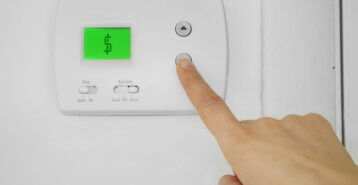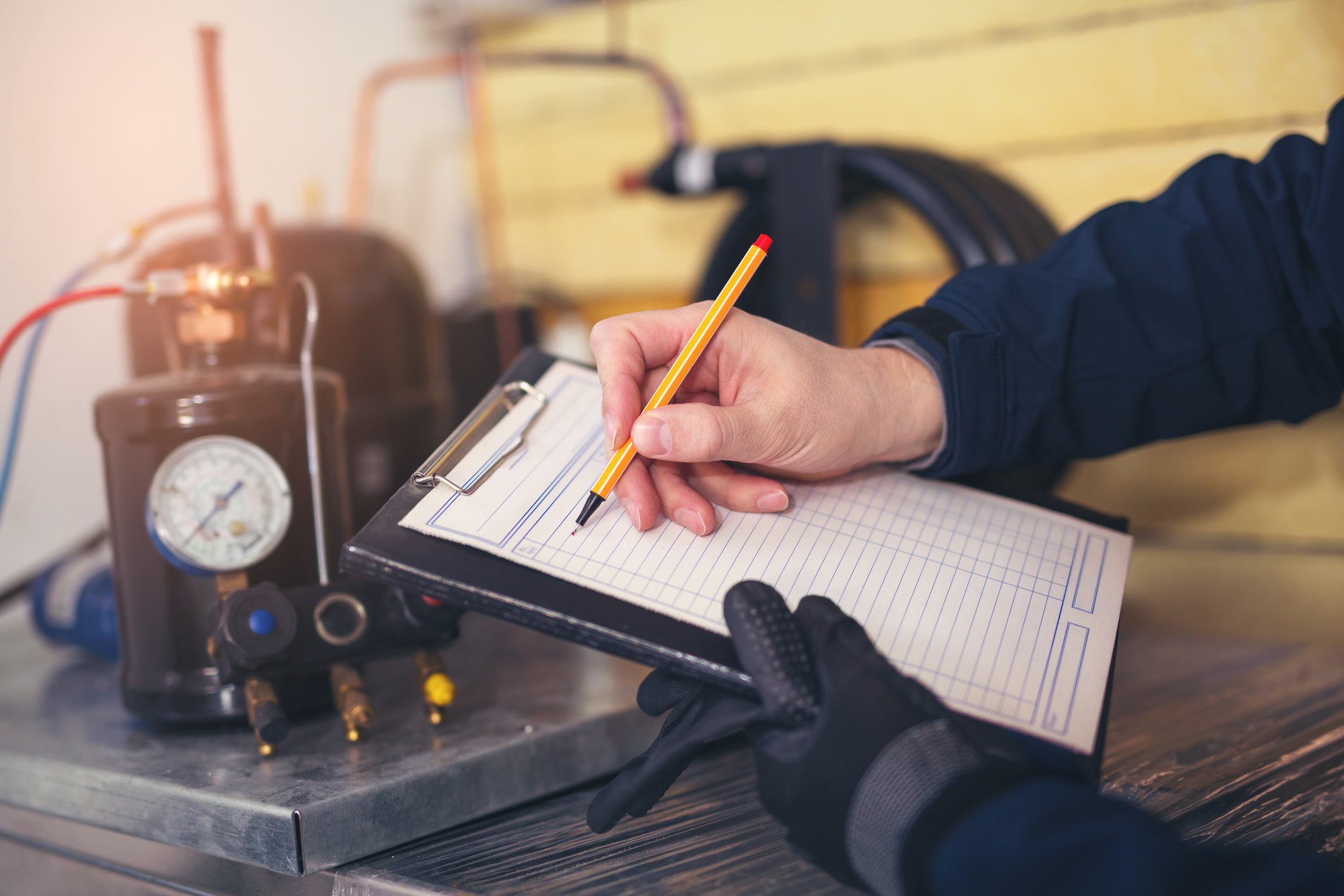How to Use This Home Improvement Financing Guide
This page walks you through estimating project cost, understanding how lenders evaluate you, and comparing every major financing option. You’ll learn the pros, cons, fees, and ideal use cases so you can pick the best fit for your budget and timeline. Then use the home improvement financing checklists at the end to prepare your application and avoid common pitfalls.

Step 1: Know Your Project Budget
- Build a Line-Item Scope: List materials, labor, permits, design, temporary housing, and contingencies.
- Add a Contingency: Plan a 10% to 20% buffer for surprises like hidden damage or price changes.
- Explore Our Cost Calculators:
- Reality-Check With Bids: Ask contractors for detailed quotes that separate labor and materials so lenders (and you) can verify costs.
Step 2: Know How Lenders Evaluate You
- Credit and DTI: Lenders care about credit history and debt-to-income; many look for housing and total-debt ratios within prudent ranges. Improving credit before you apply can expand options and lower cost.
- Documentation: Expect pay stubs, tax returns, bank statements, a project budget, and sometimes an appraisal or “as-completed” value estimate for renovation loans. Some rehab products fund in stages with inspections.
Your Home Improvement Financing Options at a Glance
| Option | Secured by Home? | Rate Type | Typical Use | Key Pros | Key Cons |
|---|---|---|---|---|---|
| Cash / Savings | No | N/A | Any size | No interest or fees | Reduces cash reserves; less flexibility if costs rise |
| Home Equity Loan | Yes | Fixed | One-time projects with known cost | Lump sum, predictable payment | Closing costs; two payments if you keep your first mortgage |
| HELOC | Yes | Variable | Multi-phase projects; draw as needed | Pay interest on what you use; flexible | Variable rate risk; repayment phase increases payment |
| Cash-Out Refinance | Yes | Usually fixed | Large projects when rates and terms make sense | One payment; can tap significant equity | Resets mortgage; closing costs; not ideal if current rate is much lower |
| FHA 203(k) | Yes | Fixed or ARM | Purchase-plus-renovation or refinance-plus-renovation | Single loan for home and repairs; based on after-improved value | More paperwork, contractor oversight, staged draws |
| Fannie Mae HomeStyle | Yes | Fixed | Conventional purchase or refi with renovations | One mortgage; broad project types | Requires approved plans, oversight, and as-completed appraisal |
| HUD Title I Property Improvement Loan | Unsecured or lien | Fixed | Improvements when equity is limited | May be available with little equity | Loan limits and eligible uses apply; approved lenders only |
| Personal Loan | No | Fixed | Smaller projects or no equity | Fast funding; no collateral | Higher rates than secured loans; shorter terms |
| Credit Card / 0% Intro APR | No | Variable | Small purchases and short payoff plans | Possible promo APR; rewards | High post-promo APR; easy to overspend |
| Contractor / Store Financing | Sometimes | Usually fixed | Equipment packages; short-term promos | Simple at point of sale | Promo terms end; may cost more overall (compare APR and fees) |
When Each Home Improvement Financing Option Shines
When it comes to home improvement financing, there’s no one-size-fits-all solution. The right financing option depends on your budget, the scope of work, how quickly you need the money, and whether you’re comfortable using your home as collateral. Below, you’ll find an overview of the most common ways homeowners cover remodeling costs, along with the scenarios where each choice tends to work best. This will help you match the financing method to your project’s needs and avoid paying more than necessary in interest, fees, or time.
Cash or Savings
Best if you can cover the project without draining your emergency fund. Paying in cash means no interest, no fees, and no impact on your credit. You also avoid the approval process entirely, which can be helpful for quick or small projects. The downside is reduced liquidity — if a surprise expense arises after the remodel, you’ll need other reserves in place. A good rule of thumb is to keep at least three to six months of living expenses in savings after paying for the work.
Home Equity Loan
Ideal for projects with a fixed scope and cost, such as a new roof, kitchen renovation, or deck addition. You receive a lump sum and repay it in fixed monthly installments, making budgeting predictable. Because it’s secured by your home, rates are typically lower than unsecured loans. However, you’re taking on a second mortgage, which means closing costs and the risk of foreclosure if you default.

HELOC (Home Equity Line of Credit)
A strong choice for multi-stage or ongoing projects where expenses are spread out over time, such as finishing a basement in phases or remodeling multiple rooms. You draw funds as needed during the “draw period” and only pay interest on what you’ve used. Many HELOCs have variable interest rates, so payments can rise over time. Some lenders allow you to lock portions of your balance into fixed rates, which can help control costs.
Cash-Out Refinance
Best when you need a significant budget and your new mortgage rate will still be favorable after refinancing. This option replaces your existing mortgage with a new, larger one, and you receive the difference in cash to fund your remodel. Because it resets your loan term, you could lower your monthly payment if rates are lower than your current loan, but you’ll also restart the mortgage clock. Closing costs can be substantial, so factor those in when comparing options.
FHA 203(k) Rehabilitation Mortgage
Ideal if you’re buying a fixer-upper or refinancing to improve your current home. This single loan covers both the purchase (or refinance) and renovation, using the property’s after-improved value to determine the loan amount. Funds are held in escrow and released in stages as work is completed, ensuring the money goes directly to the renovation. These loans require approved contractors, inspections, and more paperwork, but they can make larger projects possible even with a smaller down payment.
Fannie Mae HomeStyle Renovation Loan
A good alternative to FHA 203(k) for borrowers who qualify for conventional financing. It also allows you to roll renovation costs into your purchase or refinance, but often with fewer restrictions on project types. Like the 203(k), it’s based on the home’s after-improved value and requires an approved contractor and lender oversight. It’s best suited for well-planned renovations where you can provide detailed project estimates upfront.
HUD Title I Property Improvement Loan
Helpful when you have little or no equity but still need to make improvements. These fixed-rate loans can be used for a wide range of repairs and upgrades, including accessibility improvements, energy efficiency upgrades, or essential maintenance. Loan limits apply, and you must use an approved lender. Smaller loans may be unsecured, while larger amounts often require your home as collateral.
Personal Loan
Works well for smaller to mid-sized projects when you need fast funding and don’t want to use your home as collateral. Approval is typically based on creditworthiness and income, with funds often available in a few days. Payments are fixed, making it easy to plan your budget. Rates are higher than home-secured loans, so this is best for projects you can repay quickly or when you lack equity.
Credit Card With Introductory 0% APR
A smart choice for small, short-term purchases you can pay off within the promotional period — often 6 to 18 months. This can be a cost-effective way to finance appliances, fixtures, or materials if you already have the funds set aside to repay before the higher standard APR kicks in. It’s risky for larger expenses because interest rates after the promo can be very high.
Home Improvement Financing: Fixed vs. Variable? Lump Sum vs. Line of Credit?
- Fixed Rate, Lump Sum: Common with home equity loans, many cash-out refinances, and personal loans. You receive the entire approved amount at once and repay it in predictable monthly installments over a set term. This structure is best when your project has a well-defined scope and budget, such as replacing a roof or remodeling a single room. The stability of fixed rates makes it easier to plan your finances, but you’ll start paying interest on the full amount immediately — even if you don’t use all the funds right away.
- Variable Rate, Revolving Credit: Typical for a home equity line of credit (HELOC). You can draw funds as needed during the “draw period” and only pay interest on the amount you’ve used. This flexibility is ideal for projects done in stages, like finishing a basement or updating multiple areas over time. However, variable rates can rise during your repayment period, increasing monthly costs. Some lenders allow you to lock portions of your balance into a fixed rate for added security, so ask about this option if you’re concerned about rate changes.
| Structure | Best For | Key Pros | Key Cons |
|---|---|---|---|
| Fixed Rate, Lump Sum | Single-phase projects with defined budgets | Predictable payments; rate locked for term; easier to budget | Interest charged on full amount from day one; less flexibility for scope changes |
| Variable Rate, Revolving Credit | Multi-phase or evolving projects | Pay interest only on what you draw; flexible access to funds | Rates can increase; payment amounts may fluctuate; may require discipline to avoid overspending |
Taxes, Fees, and Total Cost
- Interest Deductibility: Interest on home equity loans or HELOCs may be tax-deductible if the funds are used to “buy, build, or substantially improve” your home. The rules can change, and deductions often depend on your total mortgage debt and filing status. Consult a qualified tax professional to understand whether your project qualifies and how to document expenses for your return.
- Closing Costs and Lender Fees: Many secured loans, such as home equity loans, cash-out refinances, and certain renovation mortgages, require closing costs. These can include appraisal fees, origination charges, title search, recording fees, and sometimes prepaid property taxes or insurance. For rehab loans, factor in draw-inspection fees since funds are released in stages after work is inspected.
- Prepayment Penalties: While less common today, some lenders still charge a fee if you pay off your loan early. If you expect to pay down your balance faster than scheduled, ask about this upfront so you’re not penalized for saving on interest.
- Ongoing Costs: Beyond your loan payment, remember that a larger home loan can increase costs like property taxes and homeowner’s insurance if your home’s value rises after improvements. Also, some financing programs require monthly service fees or annual line-of-credit fees.
Typical Closing Cost & Fee Ranges by Loan Type
| Loan Type | Estimated Closing Costs | Common Additional Fees | Notes |
|---|---|---|---|
| Home Equity Loan | 2% to 5% of loan amount | Appraisal, origination, title, recording | Often similar to a mini mortgage closing |
| HELOC | 0% to 2% of credit limit | Annual service fee, appraisal, early closure fee | Some lenders waive fees but may charge higher rates |
| Cash-Out Refinance | 2% to 5% of new mortgage amount | Appraisal, origination, title insurance, escrow setup | Higher total cost because you’re refinancing the entire mortgage |
| FHA 203(k) | 2% to 6% of loan amount | Draw inspections, supplemental origination fee | Funds disbursed in stages after inspection |
| Fannie Mae HomeStyle | 2% to 5% of loan amount | Appraisal, inspections, title, origination | Similar to 203(k) but conventional loan guidelines |
| HUD Title I Loan | Varies; often lower than equity loans | Loan insurance premium | Smaller loans may have minimal closing costs |
| Personal Loan | 0% to 8% origination fee | Late payment, insufficient funds fee | No collateral, so rates and fees depend heavily on credit |
| Credit Card / 0% APR | None | Balance transfer fee (3% to 5%) if applicable | No closing costs but high interest after promo period |
How to Choose the Right Home Improvement Financing Option
- Confirm scope and budget with a 10% to 20% contingency.
- Check equity and current mortgage rate. If you have equity and like your first-mortgage rate, compare a home equity loan vs a HELOC; if a full refinance still makes sense, compare that too.
- No equity or smaller scope? Consider a personal loan or a short 0% APR window for minor purchases you can pay off quickly.
- Big renovation tied to a purchase or refi? Evaluate FHA 203(k) or Fannie Mae HomeStyle so improvements and mortgage live in one loan.
Home Improvement Financing Application Prep Checklist
- Recent pay stubs and W-2s or tax returns
- Bank statements and proof of assets
- Contractor bid, materials list, and project timeline
- Photos or drawings, plus permits if already approved
- Appraisal or as-completed appraisal for renovation loans
- For rehab loans: be ready for staged draws with inspections
Pitfalls to Avoid
- Stretching your mortgage too long with a cash-out when a shorter-term equity loan might cost less overall.
- Variable-rate surprise on a HELOC if rates rise during your project.
- Starting before funding is ready, especially with rehab products that release funds in stages after inspections.
- Skipping a contingency and running short mid-project.

Making the Right Home Improvement Financing Choice
Choosing how to finance your home improvement project is just as important as choosing the design or contractor. The right option balances affordability, flexibility, and long-term financial health. Before committing, take time to compare interest rates, fees, repayment terms, and risks for each type of financing. Look beyond the monthly payment to understand the total cost over the life of the loan, and consider how it fits into your broader financial goals. A well-structured financing plan not only helps you complete your project successfully but also protects your budget and peace of mind long after the work is done.






